A RARE ART DECO GEM-SET, DIAMOND AND ENAMEL BRACELET, BOUCHERON Designed as a series of red enamel and gold plaque links depicting various Oriental landscapes, each within a black enamel border, enhanced by three openwork plaques set with buff-top-cut sapphires, cabochon jade, black onyx and single and old European-cut diamonds, the reverse applied with black enamel foliate motifs, mounted in platinum and 18K white and yellow gold, with French hallmarks (one black onyx missing), circa 1925-- 7¼ ins. long Signed by Boucheron, Paris, No. 8138 Along with the rectilinear style commonly associated with the Art Deco period, jewelry designers turned to the art of the east for inspiration. The Paris Chinese Opera Ball in 1923 as well as the artistic possibilities evident in Japanese art provided jewelry designers with sources from which to assimilate new ideas. Every feature of the illustrated bracelet speaks eloquently to this marriage of eastern and Art Deco themes. The oriental motifs in each of its sections are split into three panels, imitating the folding screen concept. The first section depicts a dwelling with mountains in the background; on the second, a bridge spanning a river; on the third, several houses with a gnarled tree and birds in the sky; and the last, another house with mountains. The pervasive use of triads - three panels joined together by three plaques - emphasizes the eastern preference for odd numbers (for example, merchandise is sold in groups of threes or fives, never in fours). The dominant use of red enamel, replicating Japanese lacquerware, completes the oriental theme. Between each section is an Art Deco plaque, bordered with a row of diamonds and set with buff-top sapphires, cabochon jade and black onyx. The reverse of this bracelet has been finished with the same attention to detail as the front side; black enamel branches with leaves and flowers span the panels. The illustrated bracelet was made by the prestigious Parisian jeweler, Georges Verger et Fils for Boucheron. This house also made jewelry for Van Cleef & Arpels, Linzeler and Marchak as well as for Cartier for their display at the 1925 Exposition Internationale des Arts Decoratifs. For their display at this exposition, Boucheron contributed a bracelet, composed of panels decorated with red-enameled flowers and black leaves against a purple ground joined together by diamond links. For illustration of this bracelet, see Gilles Néret, "Boucheron, Four Generations of a World-Renowned Jeweler", New York, 1988, p.86.
A RARE ART DECO GEM-SET, DIAMOND AND ENAMEL BRACELET, BOUCHERON Designed as a series of red enamel and gold plaque links depicting various Oriental landscapes, each within a black enamel border, enhanced by three openwork plaques set with buff-top-cut sapphires, cabochon jade, black onyx and single and old European-cut diamonds, the reverse applied with black enamel foliate motifs, mounted in platinum and 18K white and yellow gold, with French hallmarks (one black onyx missing), circa 1925-- 7¼ ins. long Signed by Boucheron, Paris, No. 8138 Along with the rectilinear style commonly associated with the Art Deco period, jewelry designers turned to the art of the east for inspiration. The Paris Chinese Opera Ball in 1923 as well as the artistic possibilities evident in Japanese art provided jewelry designers with sources from which to assimilate new ideas. Every feature of the illustrated bracelet speaks eloquently to this marriage of eastern and Art Deco themes. The oriental motifs in each of its sections are split into three panels, imitating the folding screen concept. The first section depicts a dwelling with mountains in the background; on the second, a bridge spanning a river; on the third, several houses with a gnarled tree and birds in the sky; and the last, another house with mountains. The pervasive use of triads - three panels joined together by three plaques - emphasizes the eastern preference for odd numbers (for example, merchandise is sold in groups of threes or fives, never in fours). The dominant use of red enamel, replicating Japanese lacquerware, completes the oriental theme. Between each section is an Art Deco plaque, bordered with a row of diamonds and set with buff-top sapphires, cabochon jade and black onyx. The reverse of this bracelet has been finished with the same attention to detail as the front side; black enamel branches with leaves and flowers span the panels. The illustrated bracelet was made by the prestigious Parisian jeweler, Georges Verger et Fils for Boucheron. This house also made jewelry for Van Cleef & Arpels, Linzeler and Marchak as well as for Cartier for their display at the 1925 Exposition Internationale des Arts Decoratifs. For their display at this exposition, Boucheron contributed a bracelet, composed of panels decorated with red-enameled flowers and black leaves against a purple ground joined together by diamond links. For illustration of this bracelet, see Gilles Néret, "Boucheron, Four Generations of a World-Renowned Jeweler", New York, 1988, p.86.
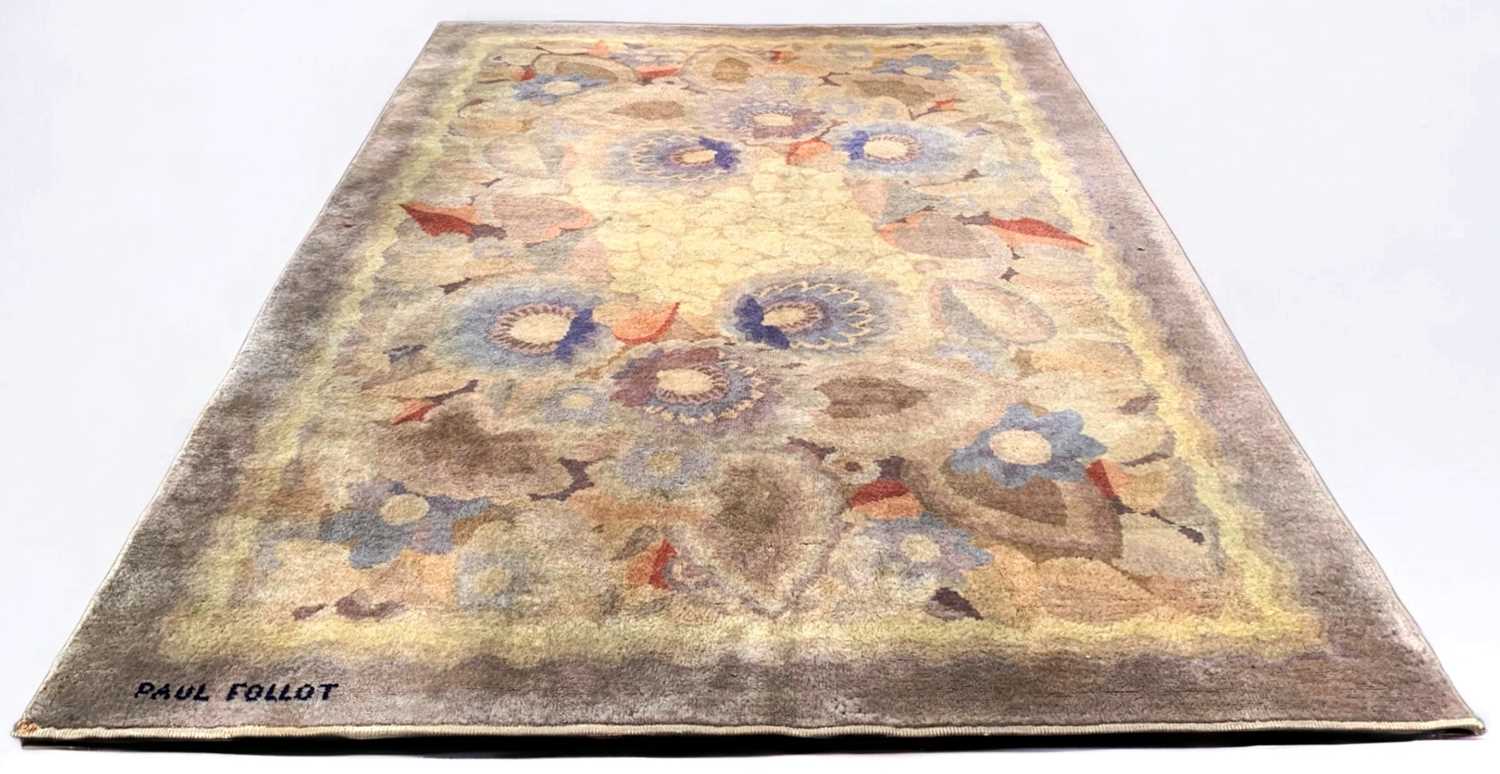

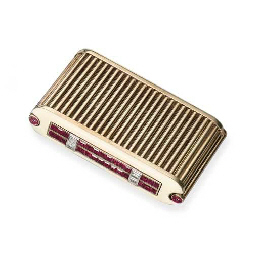
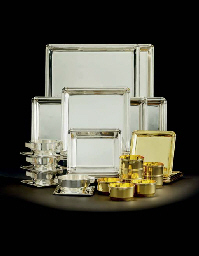
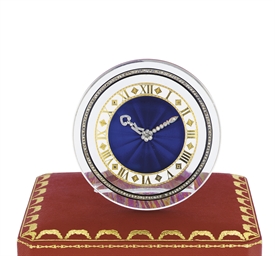
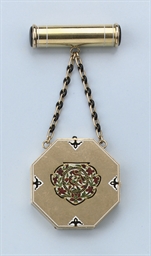
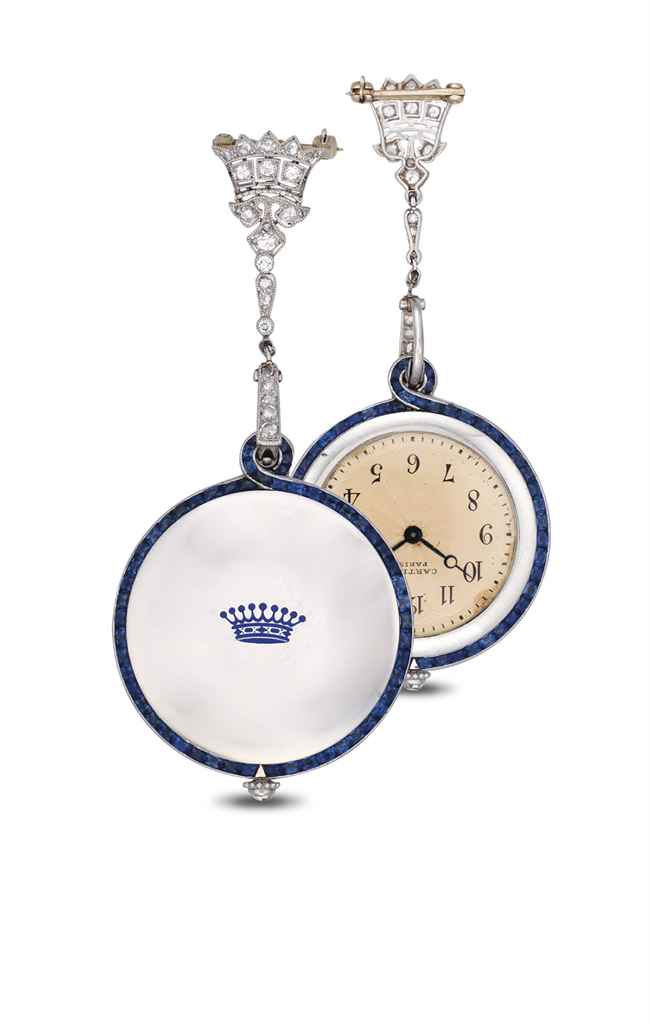

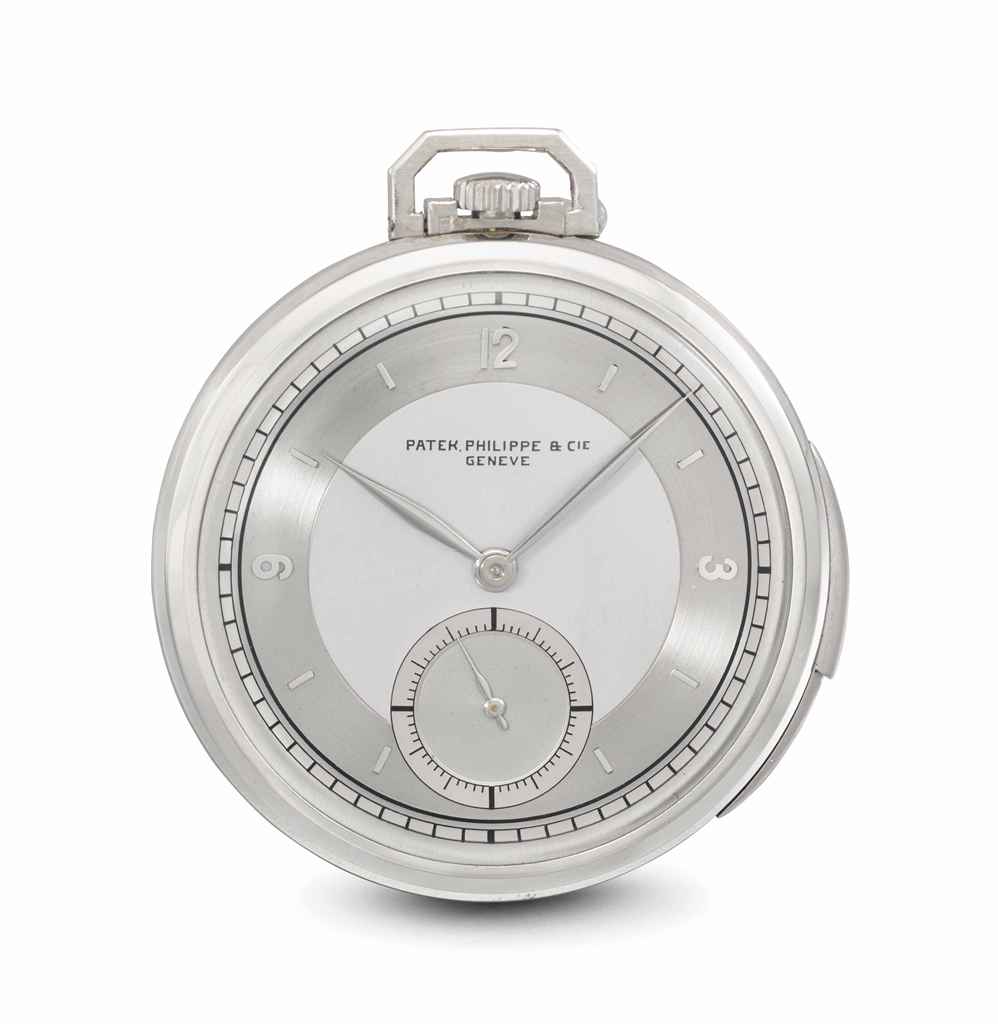
.jpg)
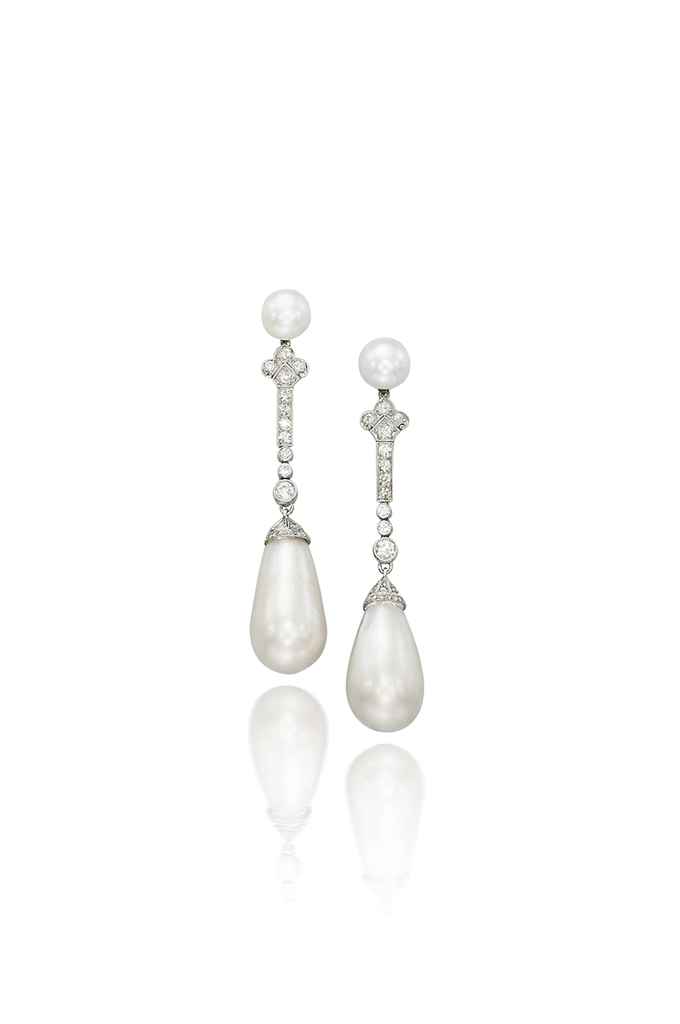
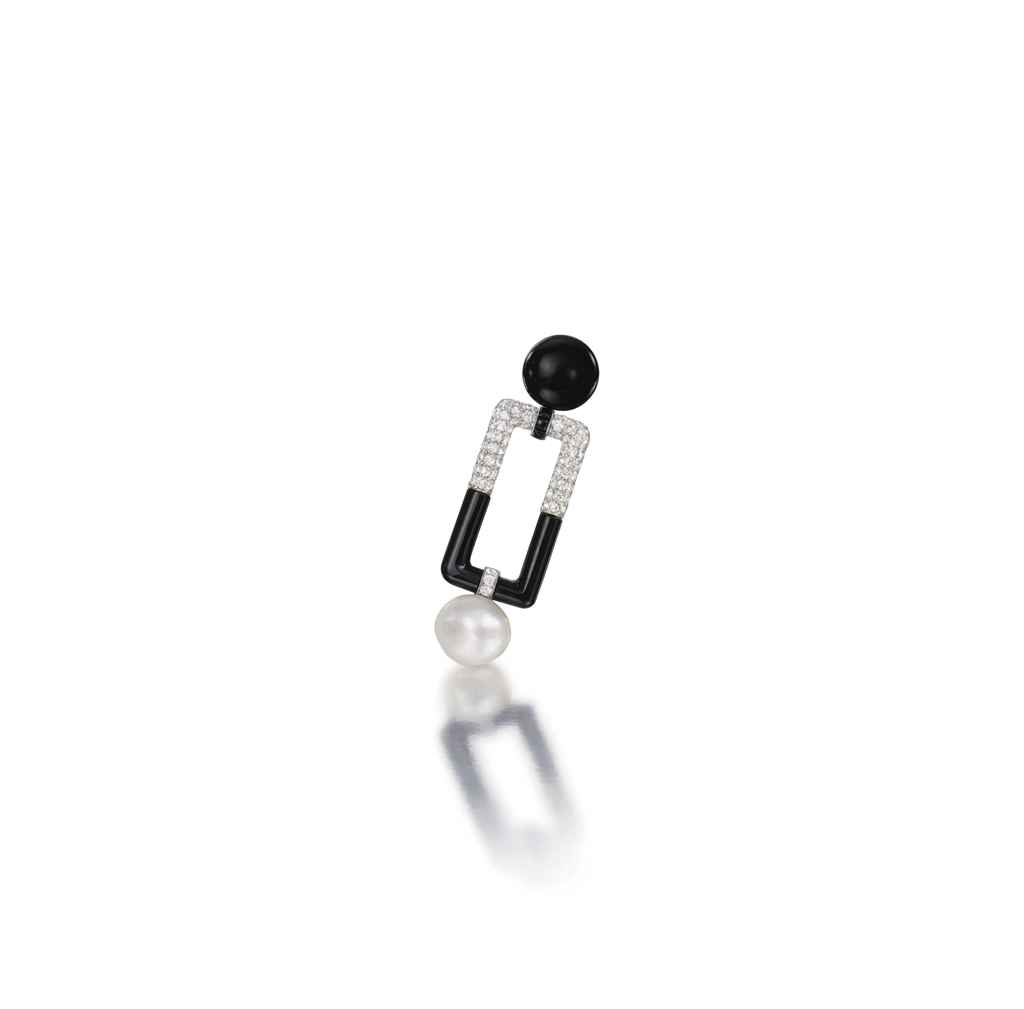
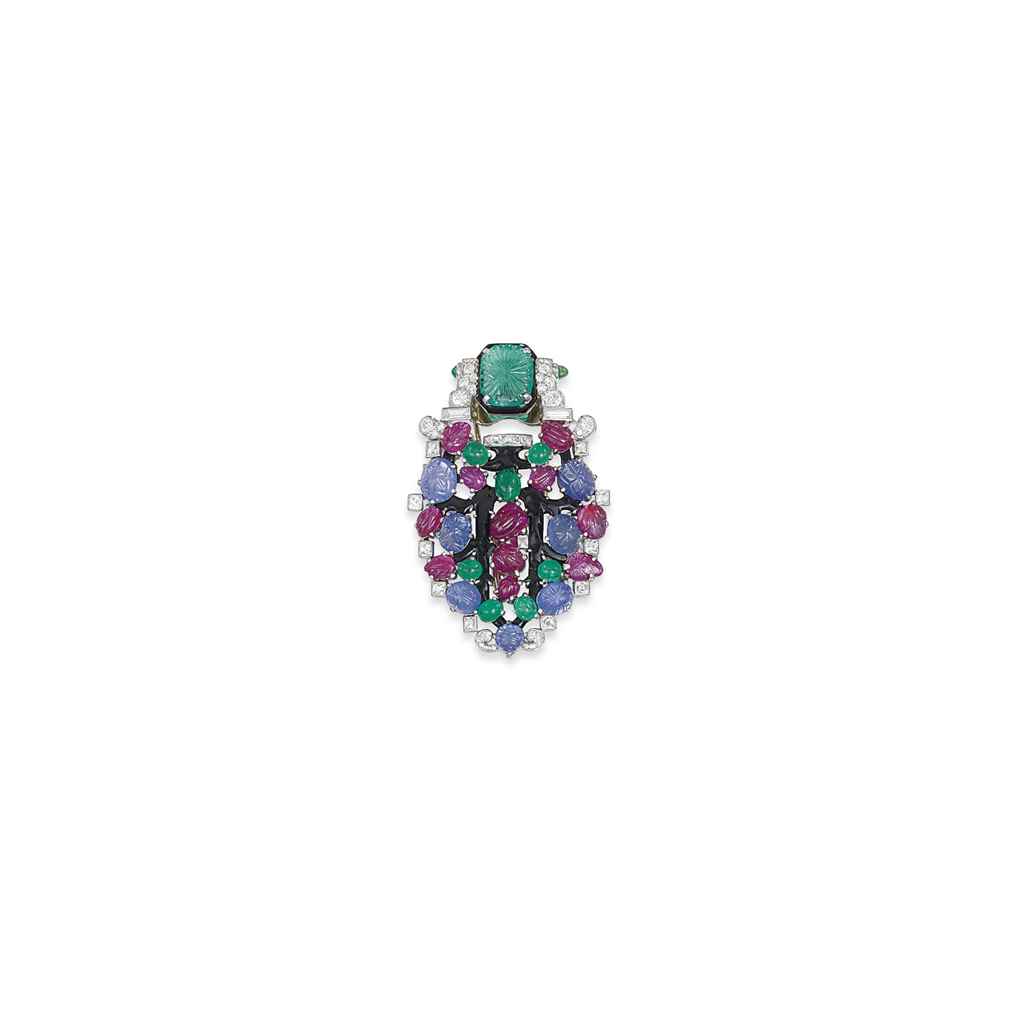
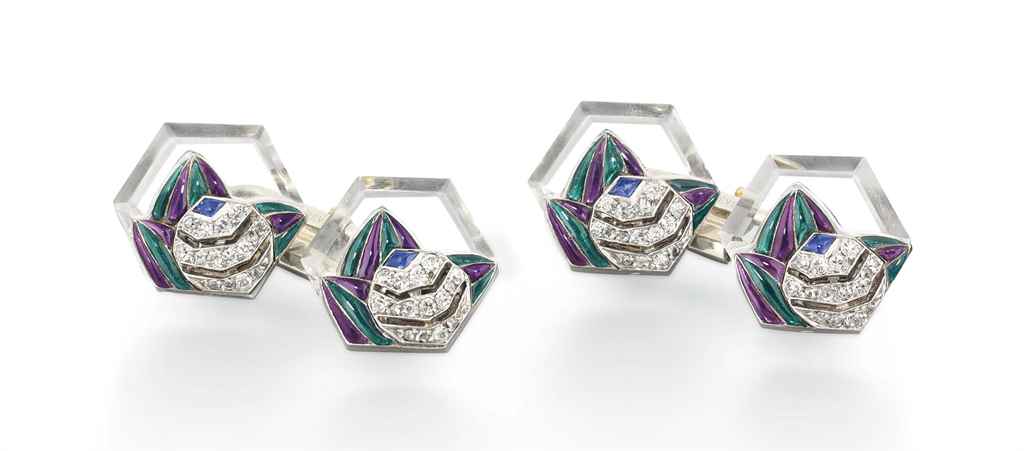
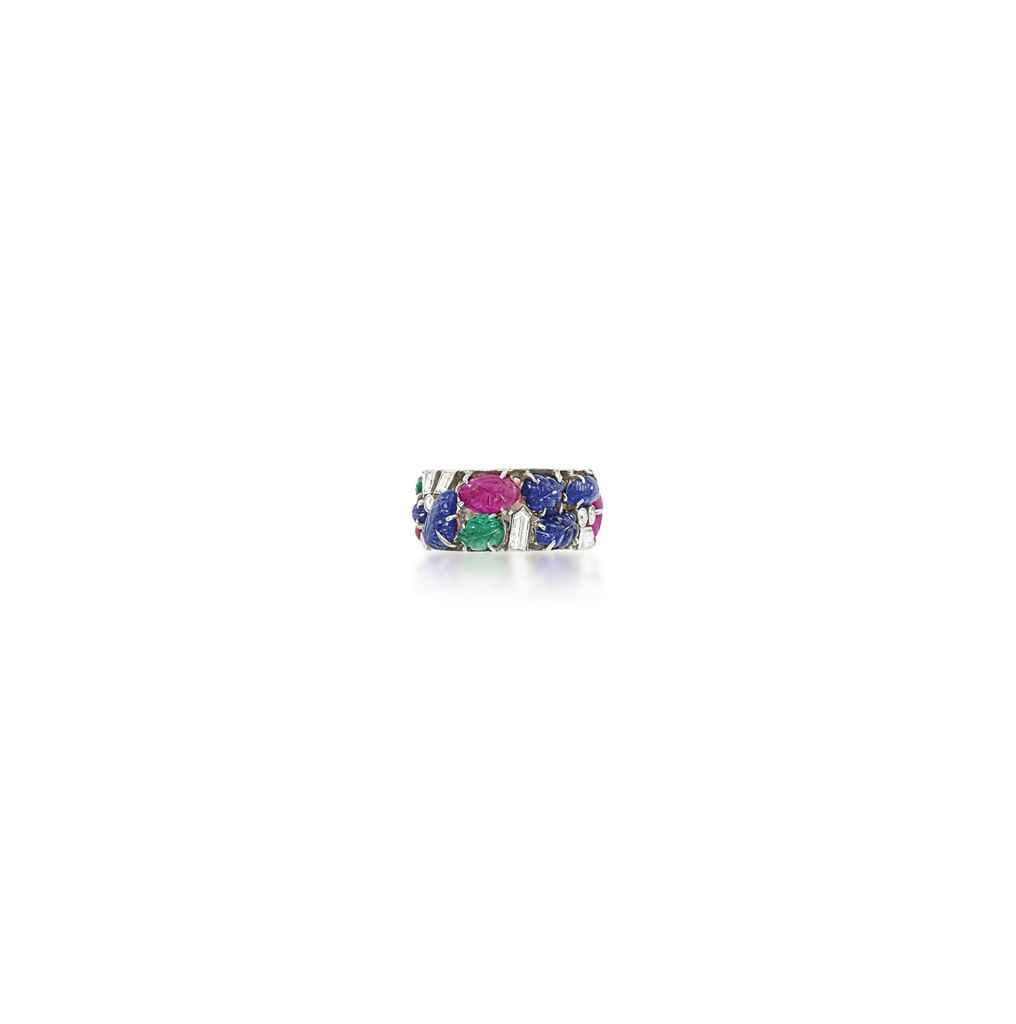
Try LotSearch and its premium features for 7 days - without any costs!
Be notified automatically about new items in upcoming auctions.
Create an alert